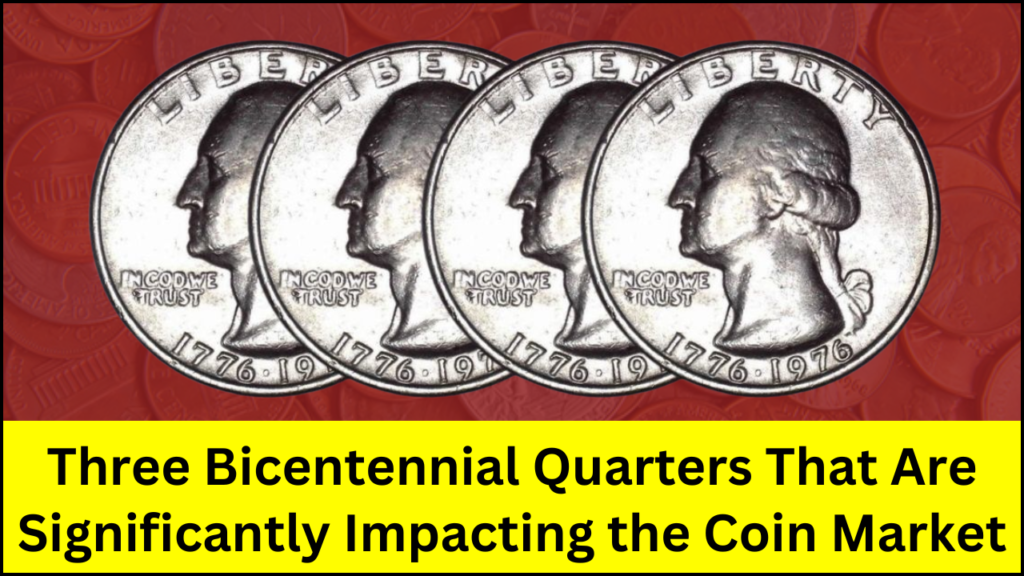
The 1976 Bicentennial quarters are more than commemorative coins—they represent a significant cultural and historical moment in American history. Minted in celebration of the United States’ 200th anniversary of independence, these coins hold a unique place in the numismatic world. Over time, specific varieties of these coins have gained notable value due to rarity, condition, or unique minting errors. In this analysis, we will explore the top three Bicentennial quarters that have profoundly influenced the coin market, their distinguishing characteristics, and their investment potential. Additionally, we’ll address common questions that collectors and enthusiasts often have about these intriguing coins.
1. The 1976-S Silver Proof Bicentennial Quarter
One of the most celebrated Bicentennial quarters is the 1976-S silverproof variety. Struck in 40% silver, this coin was specially minted for collectors as part of a silverproof set. Its mirror-like finish and intricate details make it stand out, but the true market drivers for this coin are its condition and certification by professional grading services.
Key Features:
- Composition: 40% silver, offering intrinsic material value.
- Finish: Shimmering-proof finish, distinct from regular circulation coins.
- High-Grade Appeal: Coins graded as PR70 by PCGS (Professional Coin Grading Service) or NGC (Numismatic Guaranty Corporation) have fetched upwards of $5,000 at auctions.
Market Analysis:
High-grade examples of this coin are rare, with a perfect PR70 grade signifying no visible imperfections under magnification. Such coins appeal not only to numismatists but also to investors seeking a secure asset. As silver prices fluctuate, the intrinsic and numismatic value of these coins ensures their continued demand.
Rare Bicentennial Quarter Worth Nearly $36 Million, Plus Other Priceless Coins
The Lincoln Wheat Penny, A Rare Coin Worth $20 Million That Remains in Circulation
A $51 Million Lincoln Wheat Penny, The Rare Treasure Still Circulating
The Lincoln Wheat Penny, A $1.5 Billion Treasure Still in Circulation
The Lincoln Wheat Penny Valued at $540 Million, A Detailed Guide to Rare Coins
2. The 1976-D Bicentennial Quarter with a Double Die Obverse
Minting errors are a fascinating facet of coin collecting, and the 1976-D double die obverse Bicentennial quarter is a prime example. The doubling on specific inscriptions—notably “LIBERTY” and “IN GOD WE TRUST”—distinguishes this coin from its counterparts.
Key Features:
- Error: Doubling on obverse inscriptions creates visual appeal and rarity.
- Mint Location: Struck in Denver, marked by a “D” mintmark.
- Collector Interest: High-grade specimens, graded MS65 or higher, have sold for over $3,500.
Market Trends:
Errors like this attract a unique subset of collectors who value the quirks and anomalies of the minting process. Over the past decade, increased awareness of such varieties has elevated their desirability, ensuring their continued prominence in the market.
3. The 1976 No Mint Mark Quarter Struck on Silver Planchet
The 1976 Bicentennial quarter with no mint mark, accidentally struck on a 40% silver planchet, stands out as one of the rarest and most intriguing coins of its series. Originally intended for inclusion in silver-proof sets, these coins were mistakenly released into circulation.
Key Features:
- Composition: 40% silver, increasing intrinsic value.
- Error: No mint mark, unlike other silver Bicentennial quarters.
- Market Performance: Recently, a well-preserved example sold for over $10,000 at auction.
Collector Insights:
The rarity and the story behind this coin make it highly sought-after. Serious collectors prioritize such coins for their historical and numismatic significance, often paying premiums for high-quality specimens.
Factors Driving Value in Bicentennial Quarters
Several factors influence the market value of these coins, including:
- Rarity: Limited mintages or accidental errors enhance a coin’s desirability.
- Condition: Coins with higher grades (MS65, PR70) command substantial premiums.
- Material Composition: The use of silver adds intrinsic value, making these coins attractive to both collectors and investors.
- Historical Appeal: Their role in celebrating America’s Bicentennial adds an emotional and historical dimension.
Overview of Top Bicentennial Quarters
| Coin Type | Mint Location | Composition | Notable Feature | Recent Auction Price |
|---|---|---|---|---|
| 1976-S Silver Proof Quarter | San Francisco | 40% Silver | High-grade proof finish | $5,000+ |
| 1976-D Double Die Obverse Quarter | Denver | Copper-Nickel | Doubling on obverse inscriptions | $3,500+ |
| 1976 No Mint Mark Silver Planchet | Unknown | 40% Silver | Error—no mint mark | $10,000+ |
Frequently Asked Questions
Q1: Why are Bicentennial quarters so valuable?
Ans: Bicentennial quarters are valuable due to their historical significance, unique designs, and specific varieties with errors or high grades. Coins made of silver or featuring minting errors often command significant premiums.
Q2: How can I determine if my Bicentennial quarter is rare?
Ans: Carefully examine your coin for unique features such as errors (e.g., double die), silver composition, or absence of a mint mark. Additionally, consider professional grading for an accurate assessment of condition and value.
Q3: Are all Bicentennial quarters collectible?
Ans: While most Bicentennial quarters are common, certain varieties—such as those discussed here—hold considerable numismatic value. Coins in exceptional condition or with unique attributes are especially collectible.
Conclusion
The 1976 Bicentennial quarters continue to captivate the coin market with their fascinating varieties and rich history. The 1976-S Silver Proof, the 1976-D Double Die Obverse, and the 1976 No Mint Mark Silver Planchet exemplify how a blend of rarity, condition, and story can transform coins into sought-after collectibles. For collectors and investors alike, these coins represent not only a piece of history but also an opportunity for financial appreciation in the dynamic world of numismatics.